Board and Batten is traditionally an exterior technique that involves the boards “stacked” vertically, laid similarly to vertical shiplap. Then the skinnier boards (the batten) are applied between the large boards, over the seams, for added security.

Board and Batten Install
On this third week of the One Room Challenge event, I’m talking board and batten. I have always loved the classic look of B&B. Recently, I’m loving the variety of ways people are doing it. There are SO many different variations.
The popular thing to do right now is a “faux” B&B look by using the skinny boards only. By painting the wall the same color as the trim, it fakes the look of wood behind them. That’s exactly what we’re planning on doing here!
Note: If you don’t have flat walls, you can use hardboard as your “board”, giving you a flat surface on a budget.
We went back and forth about a hundred times, before landing on the pattern we both felt good about. (There are so many options out there!)
Most of the pictures I’ve seen have the B&B cut off somewhere in the middle of the wall with a piece of horizontal trim. Then the top portion is left as paint or some kind of wallpaper like the picture above, from Repurpose Life Blog.
I love that look A TON, but our uneven/slanted ceilings pose the problem, yet again. My concern is that nothing could fill that upper space to make it feel complete. I still think I’m right about that one, but I definitely didn’t realize how hard I’d be making things by taking the B&B up to the ceiling. Here’s a look at our process…
The Math
First and foremost, calculate how many slats are going to fill the space. Start by measuring the horizontal distance from one side of the wall to the other. It’s always good to measure at least twice to be sure you’re 100% accurate! Then it’s a little bit of trial and error. I estimated the number of “sets” we would need to calculate the distance between each grouping.
Once you’ve calculated the space, map out the distance with painter’s tape to make sure you like it. If the space is too wide, try it again adding another set of batten. If the space is too thin, take a set away and recalculate.
Fun fact, a 1×2 inch board from Home Depot is actually 1.5″ thick. Since our plan was to have a set of two boards with one inch in between, I knew that I needed to plan for each “set” to be 4 inches wide. Then we used the calculations below to figure out the spacing between each set.
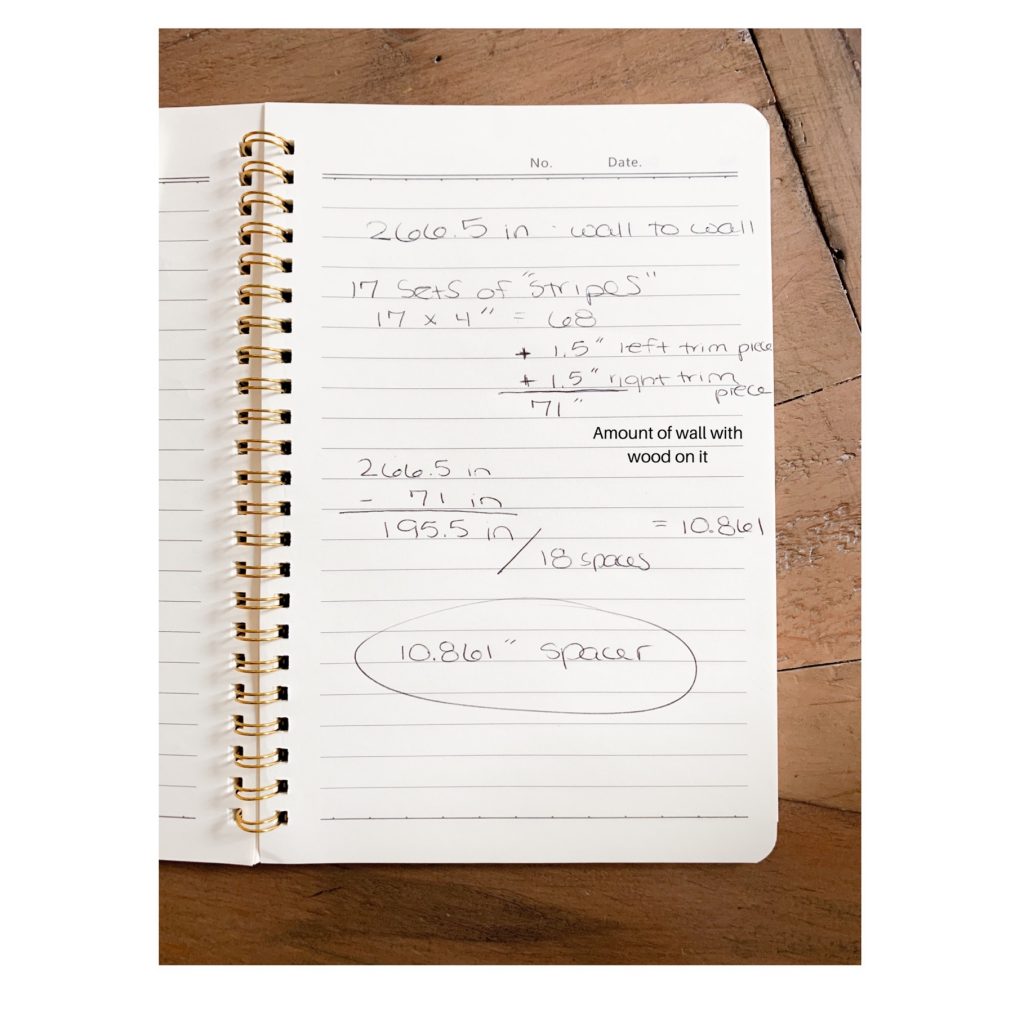
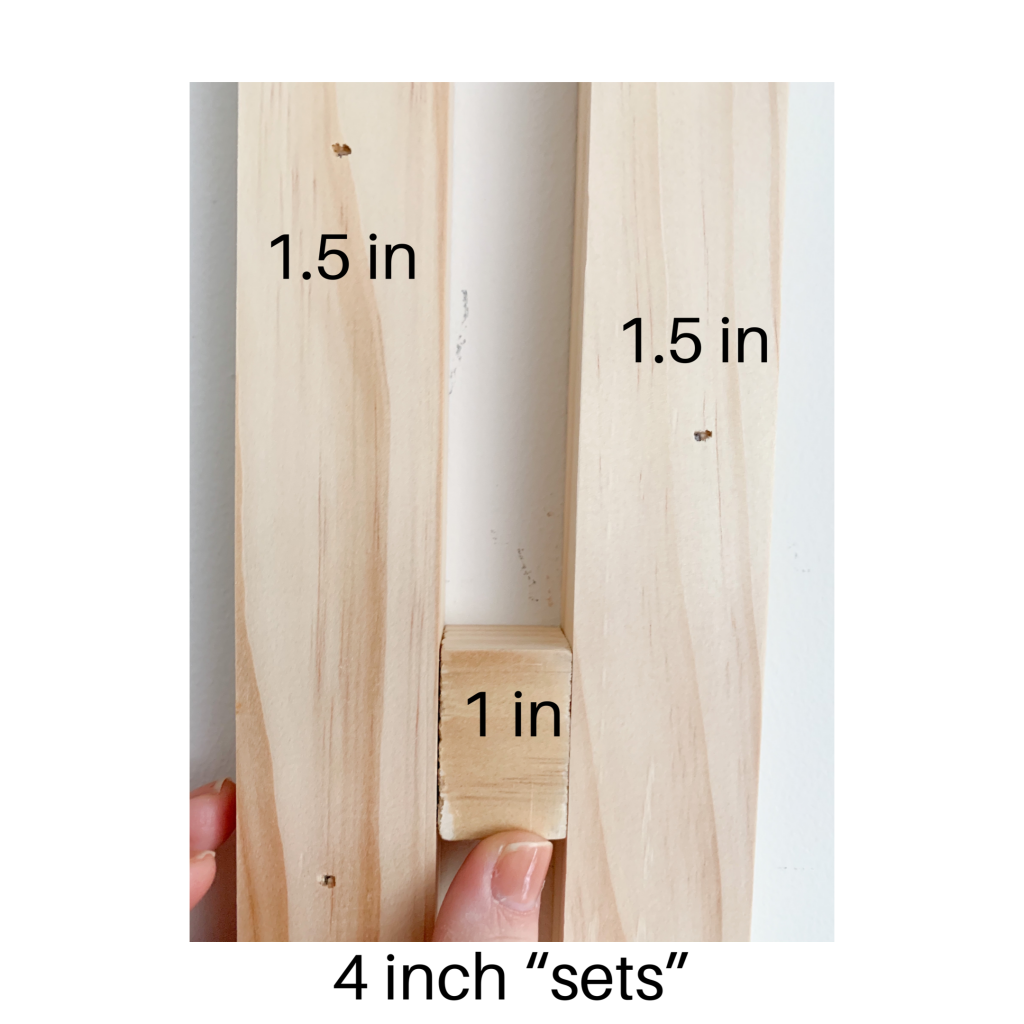
How to Use a Template Piece & Spacers
When doing vertical shiplap on a slanted ceiling, you can line up all the boards next to each other, find the angle of the ceiling, and measure the length of the shortest and the longest boards. You use the angle found to connect the lines for the shortest and the longest board, draw a line, and bam! You have your cuts. No big deal.
With board and batten, the spacing involved throws a wrench in that plan. We were stuck at the beginning, trying to figure out how to make those cuts as accurately as possible without 847,593 trips to the garage.
Enter our template piece of wood. We measured the angle of the ceiling (ours was 15 degrees), and cut a piece of wood at the angle we needed. That left that piece of wood shorter than the height of the wall. We used our spacers and a level to line up the template piece and make our mark at the bottom. Then we measured from our mark to the top of the trim and added those together to get the total measurement for our cuts.
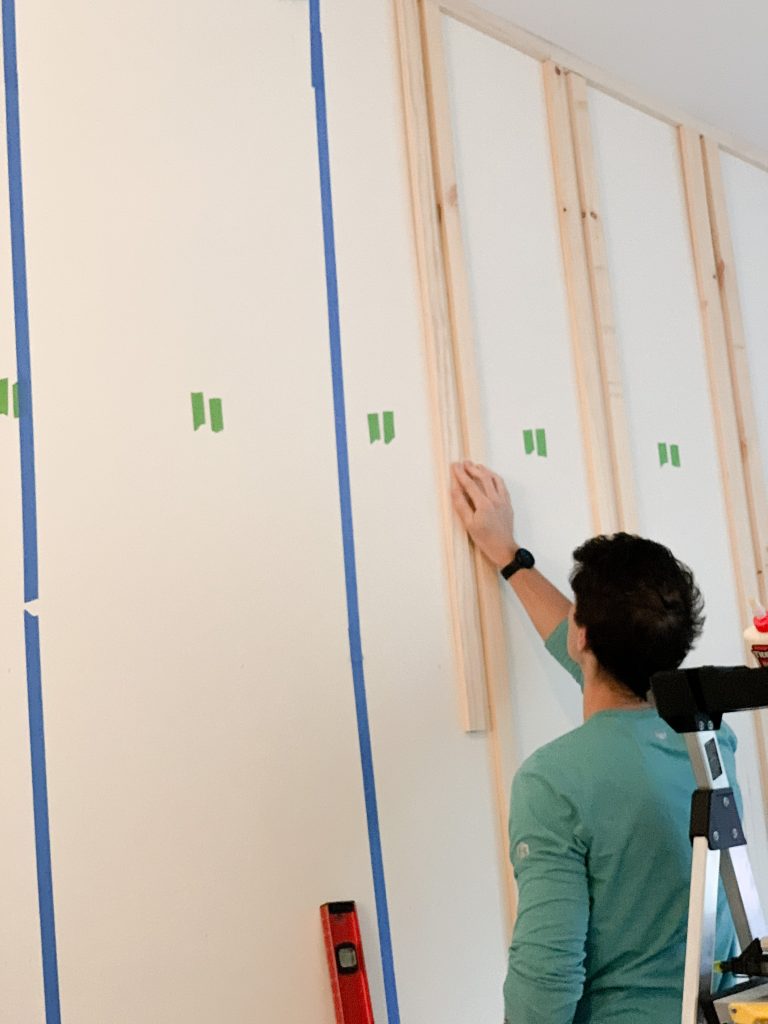
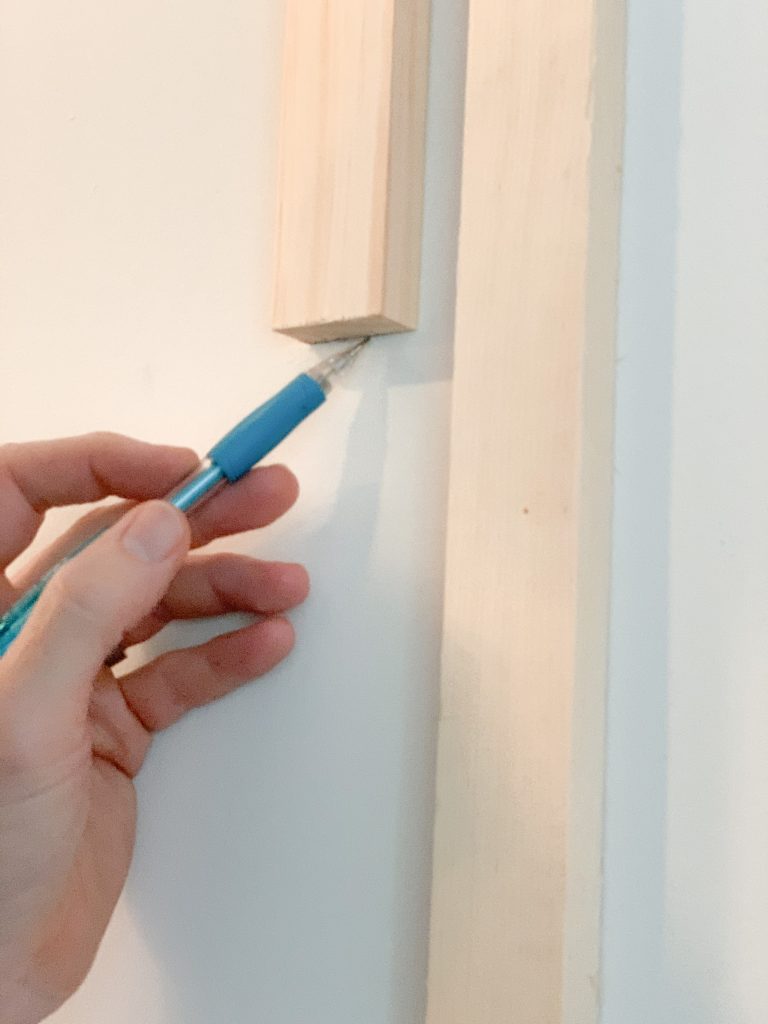
Trial and Error
For the first couple of boards, even with this method, it seemed overwhelming. The wood piece was still big, and I couldn’t hold it to the ceiling, with the level, AND bend to the ground to mark the bottom. This is going to sound like a no-brainer, but the key for us was cutting that wood template to a manageable size. Finding that comfortable height was key!
Once one set of boards was up, we used the spacer to figure out where the next set would go. This is the spacer we cut based on the measurements above. Since the calculation resulted in multiple decimal places, we knew it wouldn’t be totally exact. We mitigated this by starting at the side of the wall that would be most focal. The spacing would look more perfect there, and any imperfections would be hidden on the other side of the wall, around the window.
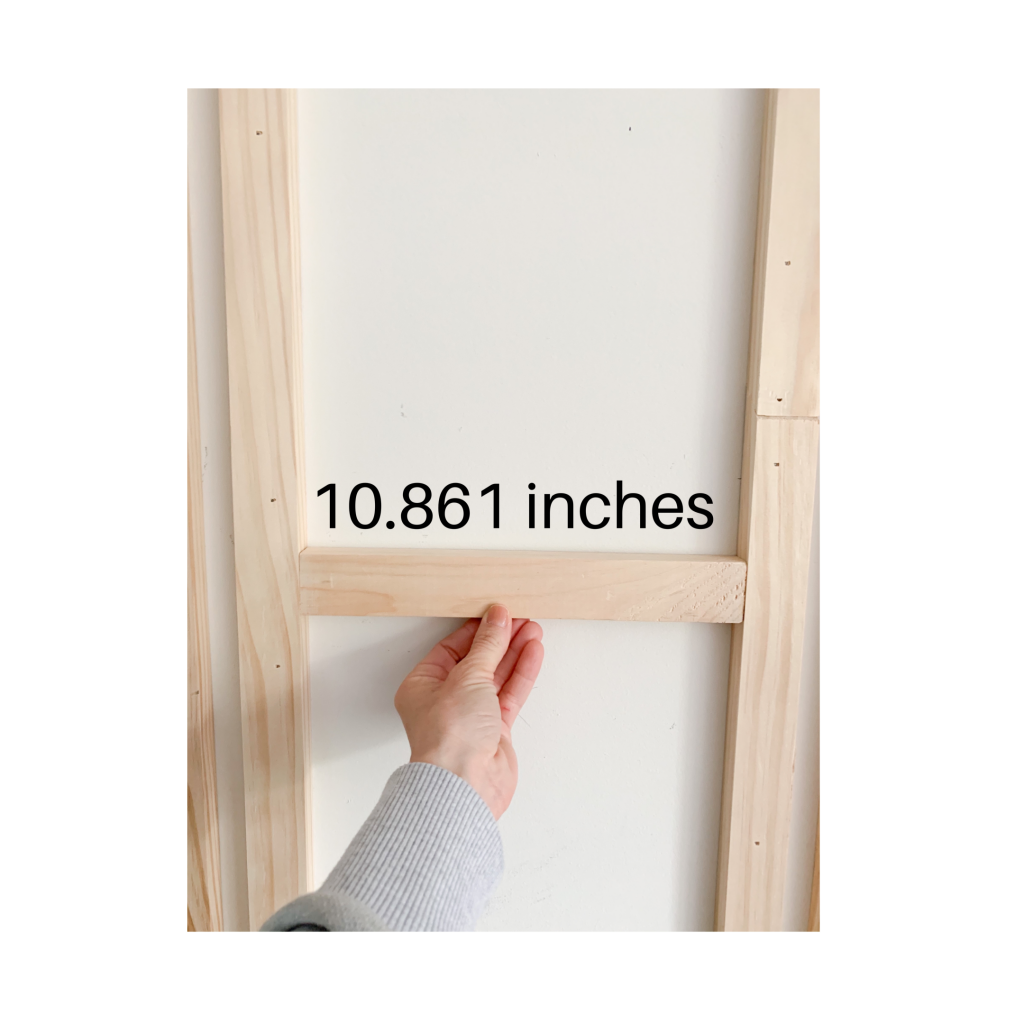
Additional Board and Batten Tips…
Mitered Joints
We used 8 ft and 10 ft long boards, but we were dealing with ceiling heights of 12 feet and above. Because we knew we’d have to piece together boards for a lot of our sets, we chose to do mitered joints. That just means we cut the boards at 45-degree angles to help them blend.
The other option would be to just cut straight across and piece them together in a butt joint.
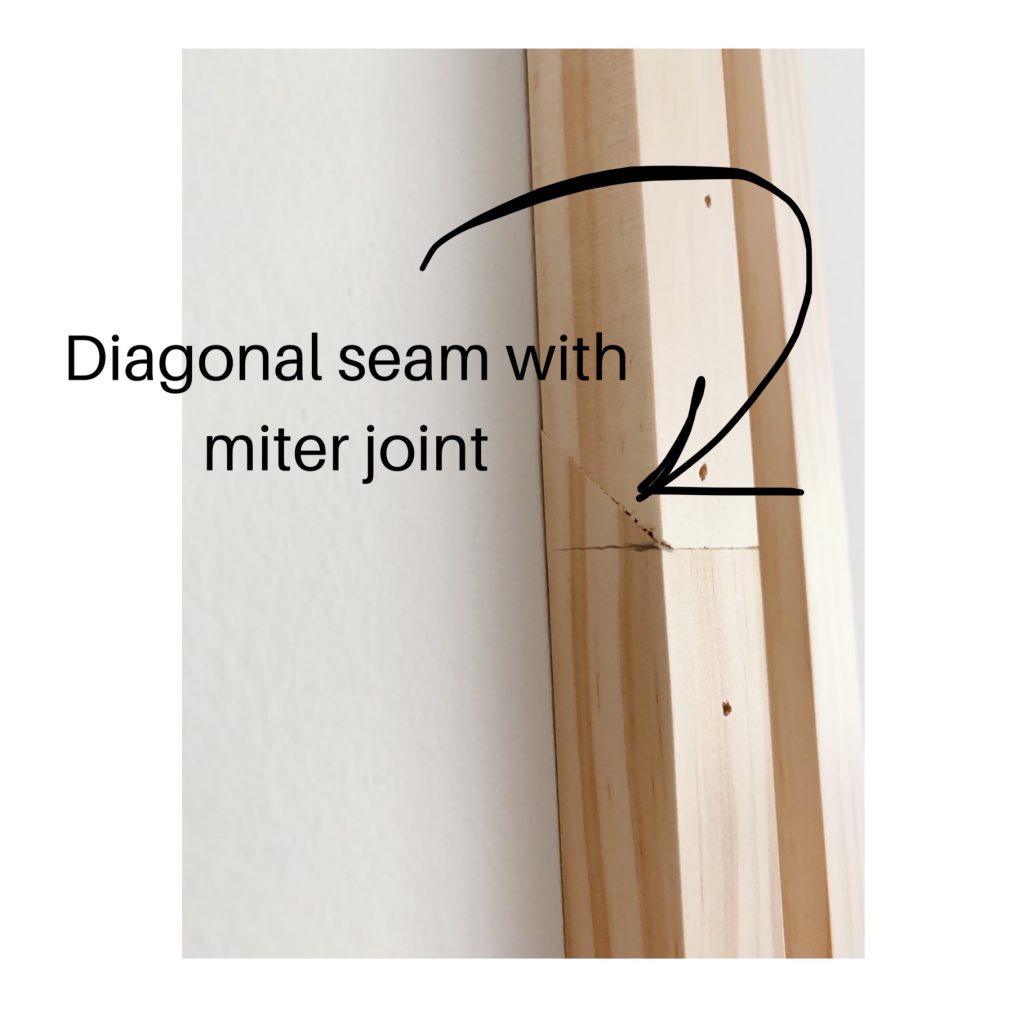
Attaching Without Studs
Normally, when attaching anything to a wall, you try to find a stud to make the most secure attachment. We didn’t want the studs to dictate our design. Fortunately, we also didn’t need the strength of a stud to hold up such light boards.
We were originally hoping to avoid using wood glue to secure them to the wall. The first thing we did was attach them with the nail gun, head-on. Once we had the boards in the right position, we went back and shot angled nails in both directions. By doing this, the boards are anchored more securely into the drywall (pictured below).
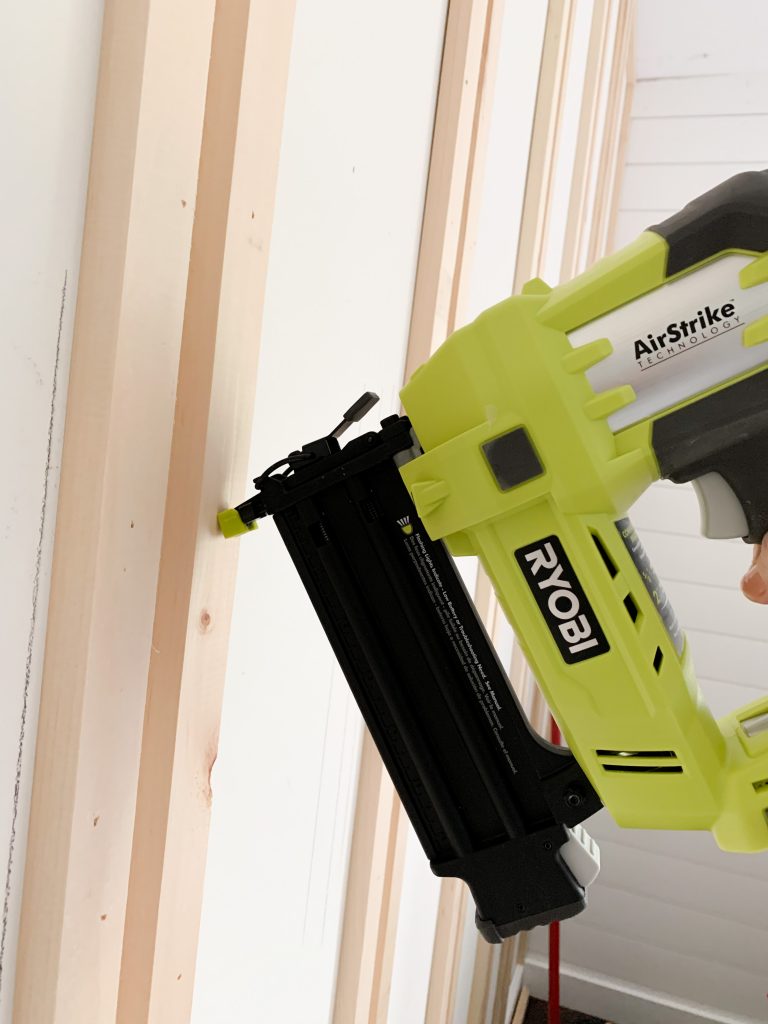
In addition to the nail “anchors”, we used wood glue (construction adhesive also works!) for boards that were slightly bowed and needed extra help attaching. And then again on the boards that will be behind the bed and are responsible for holding up the cane headboard.
Just keep in mind that if you use adhesive of any kind, removing the board and batten at any time will rip the drywall paper.
Board and Batten Down! Or… Up!
Another part of the project down, and another 50 lessons learned! Grateful for the new knowledge we now have, and we’re ready to dive into some other fun parts of our bedroom makeover!
If all goes according to plan (which I now know is never), we’re planning on starting the cane headboard pieces this week and seriously cannot wait!
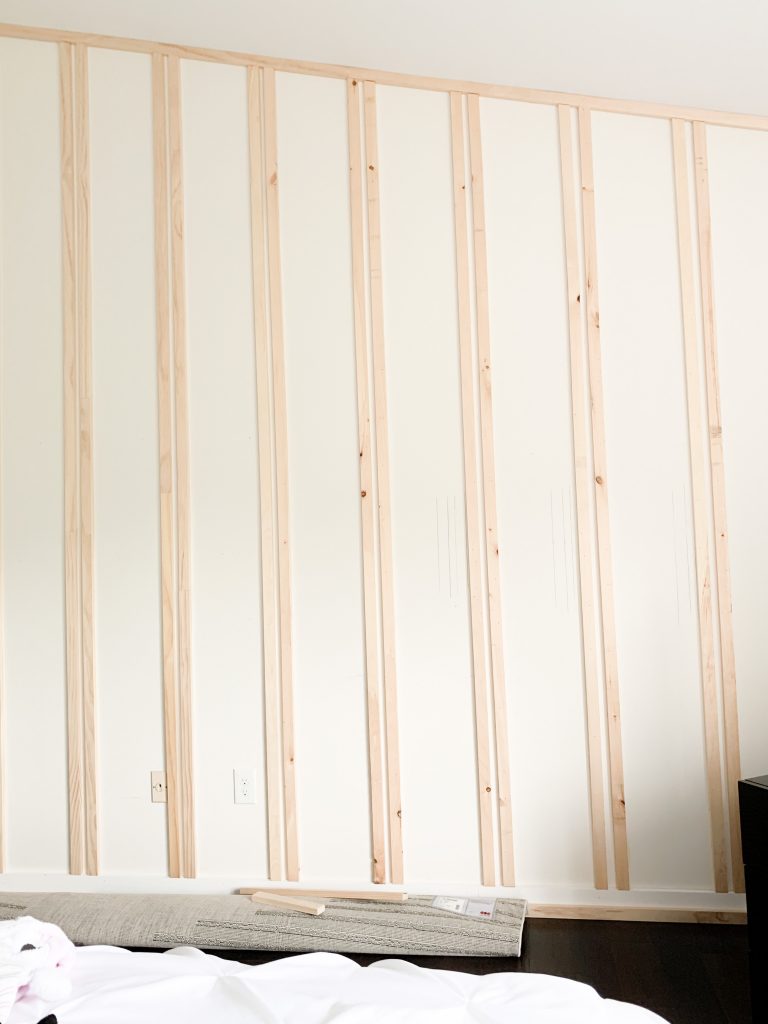
Next Post: ORC Week 4 – Cane Headboard, The Plan

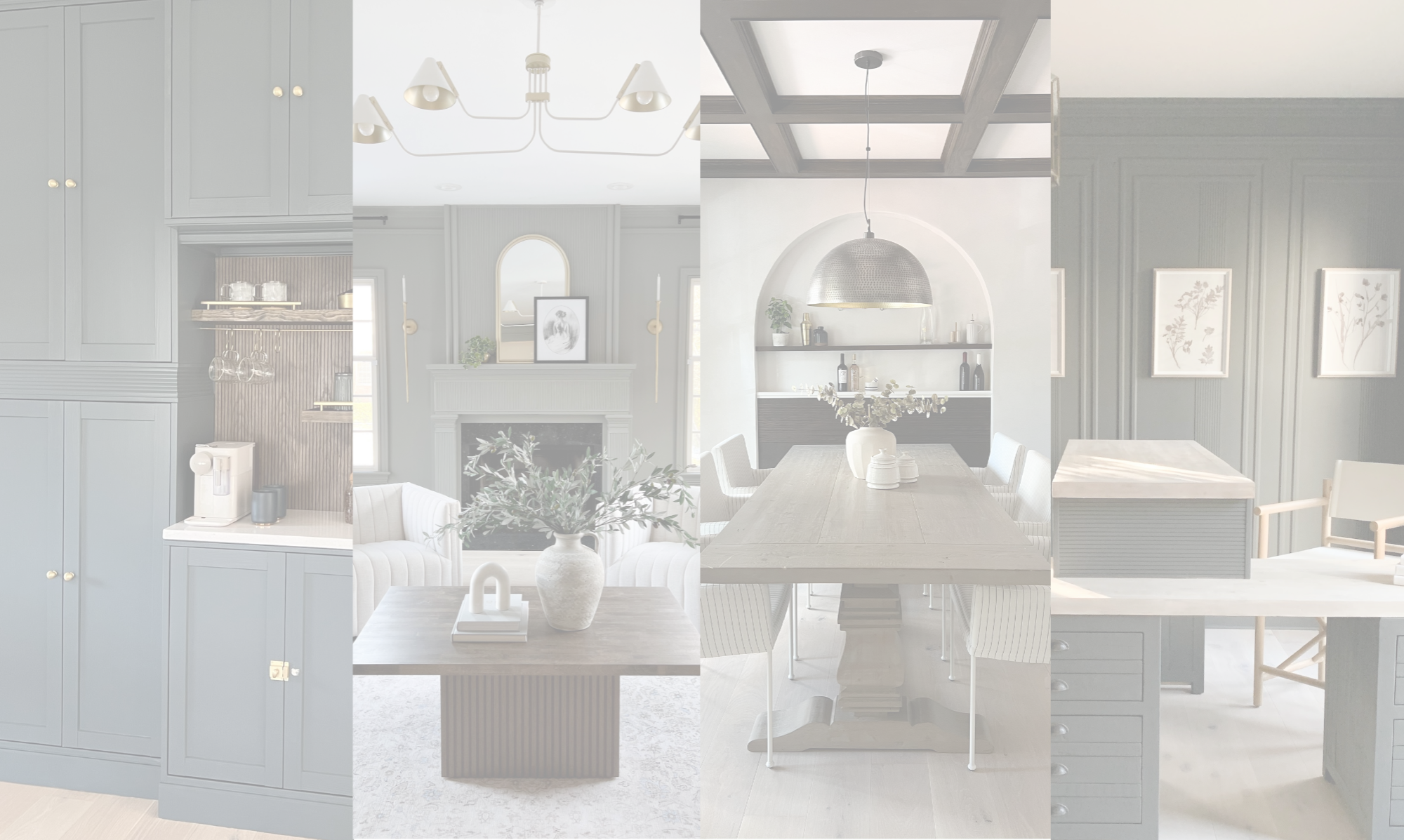
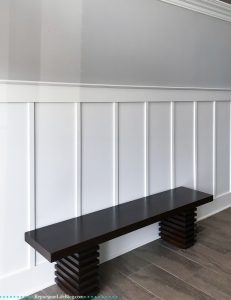
One Reply to “ORC Week 3 – Board and Batten with a Slanted Ceiling!”
Comments are closed.